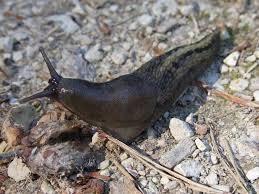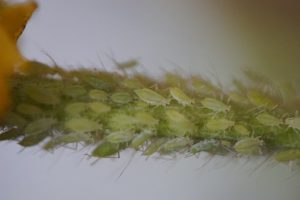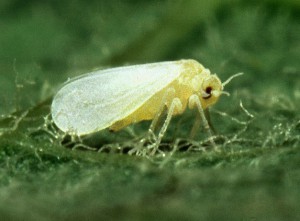How To Control Spring Garden Pests

Spring has finally arrived, and insect pests that went into hiding by overwintering have emerged as they seek to reside in our gardens. These garden pests use plants as shelter, a food source, and as a place to lay their eggs as they make way for the next generation. If left to occupy and use our gardens as a natural habitat, these insect pests will turn our dream gardens into a nightmare if control measures are not taken. Whether we’re growing ornamental or edible plants, succulents, etc, homeowners across the country, including farmers, plant nurseries, and other growers, are faced with these uninvited guests.
The spring months allow us to get our gardens going as the warmer months return, but we must be aware of many of these pests to bring control as soon as they come out of hiding. Below we will take a closer look at seven spring garden insect pests, including signs or symptoms to look for so you can put control measures in place to ensure that your garden plants continue to thrive as they grow healthy, providing a good (edible garden) harvest, or by adding beautification to your landscapes.
Snails and Slug Control

Slugs feed on dead garden animals, tender young plants, rotten matter, fungi, decomposing plants, and even paper. Snails feed on the leaves of living plants, fruits, stems, barks, young tender plant roots, and flowers. The signs of slugs and snails are closely related, with slugs, you will notice a clear white slime substance, and large ragged holes in flowers and leaves of tender plants. As you continue your detective work, you will also, in some cases, notice this clear slime on the soil surface that will give clear evidence of which direction the slug is headed.
Signs of snails may include a clear substance that leaves a trail; this substance is known as mucus, and helps the snail to move over the soil surface easily. Another sign of snails in your garden is that the leaves don’t only have this mucus, which some folks call slime, but holes can be seen in the leaves. Slugs and snails are active from spring through fall, so during this time of the year, be on the lookout for them in your garden. Slugs and snails can lay dozens of eggs up to six times per year, making them very difficult to control. Slugs and snails are active on cloudy days, at night, or just before dawn. Places to check include under rocks, plants, old pieces of boards, and other matted garden debris.
- Hand-picking and placing them in a bucket of water with dish detergent will eliminate them.
- Snail baits can be purchased, but it is good to purchase those that are non-toxic.
- Cultural practices have given good results. Using barriers such as sand, mulches, pine nuggets, and gravel is a safe and natural means of control.
- Using eggshells is a safe and effective method. Allow the shells to dry, crush, and scatter them through your garden. The jagged edges will cut into their bodies, making it painful for them, and as the eggshells break down, calcium will be added to the soil
- Sprinkling coffee grounds around plants has offered temporary help
- Keep plants and soil dry as much as you can because snails and slugs are attracted by moisture, which is the condition they prefer to lay their eggs. Controlling moisture will discourage snails.
- Snails and slugs are a good delicacy for ducks and chickens. This is a natural way to bring them under control
- Soaking a piece of board in beer will attract them. Now catch them and place them in a bucket of water with a bit of dish liquid, which will eliminate them
Mealybugs Control

Mealybugs are insects that are covered in a white cottony wax coating, these insect pests move very slowly on the host plant. They belong to the sucking insect family, mealybugs cause the leaves to turn yellow and then brown, after a while, the leaves fall from the plant onto the ground.
What makes matters worse is the excrement of the mealybugs attracts ants that cause sooty mold to form on the leaf surface. As a result, the plant’s leaves take on a dusty grayish appearance. If there is a great build-up of sooty mold, it will interfere with the plant’s ability to make its food.
The excrement of the mealybug is a sugary substance that ants harvest for food. Mealybugs can be found in landscapes and gardens, in plant nurseries, and also on indoor plants. Make sure that your plants are in good health by giving them the proper care to help ward off mealy bugs. Mealybugs can be controlled with insecticidal soap, horticultural oil, or neem oil.
Aphid Control

Aphids are tiny insects that are either white, brown, grey, yellow, or light green with a pear-shaped body, these insects suck the juice from the plant leaves causing discoloration, curl up, grow stunted followed by leaf drop.
Aphids like mealy bugs also secrete honeydew as their excrement, which attracts ants and encourages the presence of sooty mold. The females lay eggs in the crevices of the twigs of the plant.
Within several days of being laid, the nymphs emerge. The nymphs are greenish but turn yellow as they mature. Aphids love to feed on the tender shoots of the host plants, flowers, fruit trees, and shrubs. I have also seen them in herb and vegetable gardens, aphids can be controlled with insecticidal soap, horticultural oil, and neem oil. A strong spray of water will also knock them off the garden plant’s casing, elimination.
Scale Control

There are many species of scale insects worldwide, these insects can cause damage to plant life. Scales can be found in great masses in a fixed or unmovable position on garden plants. These insects are sucking insects and suck the sap from the plant.
Scales can also be found on plants that are grown in plant nurseries, these insects are widespread and attract ants that are in search of their excrement, which is a sugary substance known as honeydew.
Their excrement can also cause your plants to be covered with a black substance known as sooty mold that grows on the plants. Sooty mold causes plants to look sickly. Scales can be controlled with insecticidal soap, horticultural oil, or neem oil.
Whitefly Control

Whiteflies are tiny white insects that can cause serious damage to plant life. There was a time when our region experienced a serious outbreak of these pests that caused extensive damage to the Ficus Benjamina to the point that local plant nurseries began to give out instructions on how to control this insect.
It was a three-part instruction that I implemented to control these pests. Whiteflies suck the plant juices causing the yellowing of leaves and leaf drop. Because they are sucking insects they also do what other sucking insects do. To find out more about whiteflies, read the section that discusses mealybugs and aphids.
Eggs are laid on the underside of the leaves and hatch in about eight days, their nymphs go through four stages. Most species can complete a life cycle in about 20 to 30 days.
They can usually be located on the underside of the leaves. When the leaves are shaken, they will begin to fly, and when you discontinue shaking the leaves, they will reattach to the leaves on the underside again. Whiteflies can be controlled with insecticidal soap, horticultural oil, or neem oil.
Thrip Control

Thrips are sucking insects that cause leaf yellowing, twisted leaves, and leaf dropping, these tiny insects can do serious damage to garden plants. I have dealt with thrips on many occasions and have seen the damage they cause. Their saliva is toxic to plants.
There are many species of thrips, their life cycle consists of egg, pupa, larva, and adult, the life cycle of thrips is completed in 11-25 days. Adults are straw-colored or black and have slender bodies. Thrips can be controlled with insecticidal soap, horticultural oil, or neem oil.
Spider Mite Control

Spider mites are very tiny insects that reside on the underside of plant leaves, plants that are infested with these insects normally have spider webs and take on a dusty greyish appearance. To see if your plant is spider mite infested, place a sheet of white paper under the leaves.
Shake the leaves, and if there is an infestation, you will see specks or spots moving around on the paper. You may even feel them crawling around on the surface of your skin. Spider mites’ life cycle consists of egg, larva, and two nymph stages. Spider mites can be controlled with insecticidal soap, horticultural oil, or neem oil.
Crucifer Flea Beetle Control

These beetles are small and dark, jump like fleas and congregate mostly in edible gardens. The adult beetles will chew round holes in the leaves, their larvae will feed on the plant’s roots. Make that all leaf litter is raked up along with other debris. The use of neem oil, Rotenone, Pyrethrin, etc, has been known to be effective.
Conclusion
During the spring months, when garden plants are healthy and growing in full bloom can become so inviting, giving a wonderful feeling as we sit back and reap the rewards. Don’t let these garden pests rob you of the time and the money that was invested to achieve the desired results. Strike back with these control measures that have proven to be effective.











This article offers fantastic insights into the various pests that can invade our gardens during spring. It’s great to see such a detailed breakdown of each pest, from slugs and snails to aphids and mealybugs. One question that comes to mind is how effective long-term solutions like neem oil are compared to chemical pesticides. While natural remedies seem to work well initially, especially for minor infestations, I’m curious if they truly provide lasting protection or if stronger treatments are necessary as the season progresses.
I completely agree with the emphasis on early intervention, as pests like aphids can do a lot of damage before you even notice. I’ve personally dealt with aphids on my vegetable plants and found that using insecticidal soap helped, but I had to apply it several times to really keep them at bay. I also tried sprinkling coffee grounds to combat snails, which seemed to help create a barrier, and the best part is it’s non-toxic and safe for my pets.
Overall, I think the advice about using organic methods first—whether it’s with neem oil, diatomaceous earth, or homemade remedies—should definitely be prioritized. They not only keep our gardens healthy but also protect beneficial insects. However, if the infestation gets out of hand, it might be worth considering stronger solutions to prevent further damage. The balance between organic and chemical controls is something every gardener needs to assess based on their unique situation.
While I agree that chemical insecticides have their place, these formulations should be considered based on the severity of the infestation, and only then should the least toxic be considered first however when it comes to crops I would rather stay away from chemicals and would prefer to stay with organics.
The good news is scouting your garden weekly to control any pest issues is a plus because this practice will allow you to spot issues before it becomes and infestation that calls for drastic measures like the use of chemical insecticides.
This is right on time as I’m starting to grow my garden! Keeping pests under control without harming beneficial insects is always a challenge.
Do you have any recommendations for natural pest control methods that are safe for pets? Also, have you found certain plants to be particularly good at repelling common garden pests?
There are many organic pesticide brands on the market sold under different trade names, before purchasing read the label or have a talk with your nurseryman or garden center rep.
There are a variety of plants that can be used to control garden pests, some of these plants are mint, rosemary, garlic, basil, lavender, marigold, Lemongrass, thyme, bay leaves, sage, dill, etc….
I hope this helps.